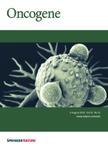版权所有:内蒙古大学图书馆 技术提供:维普资讯• 智图
内蒙古自治区呼和浩特市赛罕区大学西街235号 邮编: 010021

作者机构:Natl Ctr Cell Sci NCCS Complex Pune 411007 Maharashtra India
出 版 物:《ONCOGENE》 (致癌基因)
年 卷 期:2016年第35卷第6期
页 面:727-737页
核心收录:
学科分类:0710[理学-生物学] 1002[医学-临床医学] 100214[医学-肿瘤学] 10[医学]
基 金:NCCS
主 题:Animals Antineoplastic Agents/isolation & purification Antineoplastic Agents/therapeutic use Cell Fractionation/methods Cell Fractionation/methods Cell Line, Tumor Clone Cells Drug Discovery/methods Drug Screening Assays, Antitumor/methods Drug Screening Assays, Antitumor/methods Endpoint Determination/methods Female Flow Cytometry/methods Flow Cytometry/methods Humans Mice Mice, Inbred NOD Mice, SCID Neoplasms/drug therapy Neoplasms/pathology Treatment Outcome Xenograft Model Antitumor Assays
摘 要:Tumor heterogeneity and the presence of drug-sensitive and refractory populations within the same tumor are almost never assessed in the drug discovery pipeline. Such incomplete assessment of drugs arising from spatial and temporal tumor cell heterogeneity reflects on their failure in the clinic and considerable wasted costs in the drug discovery pipeline. Here we report the derivation of a flow cytometry-based tumor deconstruction platform for resolution of at least 18 discrete tumor cell fractions. This is achieved through concurrent identification, quantification and analysis of components of cancer stem cell hierarchies, genetically instable clones and differentially cycling populations within a tumor. We also demonstrate such resolution of the tumor cytotype to be a potential value addition in drug screening through definitive cell target identification. Additionally, this real-time definition of intra-tumor heterogeneity provides a convenient, incisive and analytical tool for predicting drug efficacies through profiling perturbations within discrete tumor cell subsets in response to different drugs and candidates. Consequently, possible applications in informed therapeutic monitoring and drug repositioning in personalized cancer therapy would complement rational design of new candidates besides achieving a re-evaluation of existing drugs to derive non-obvious combinations that hold better chances of achieving remission.